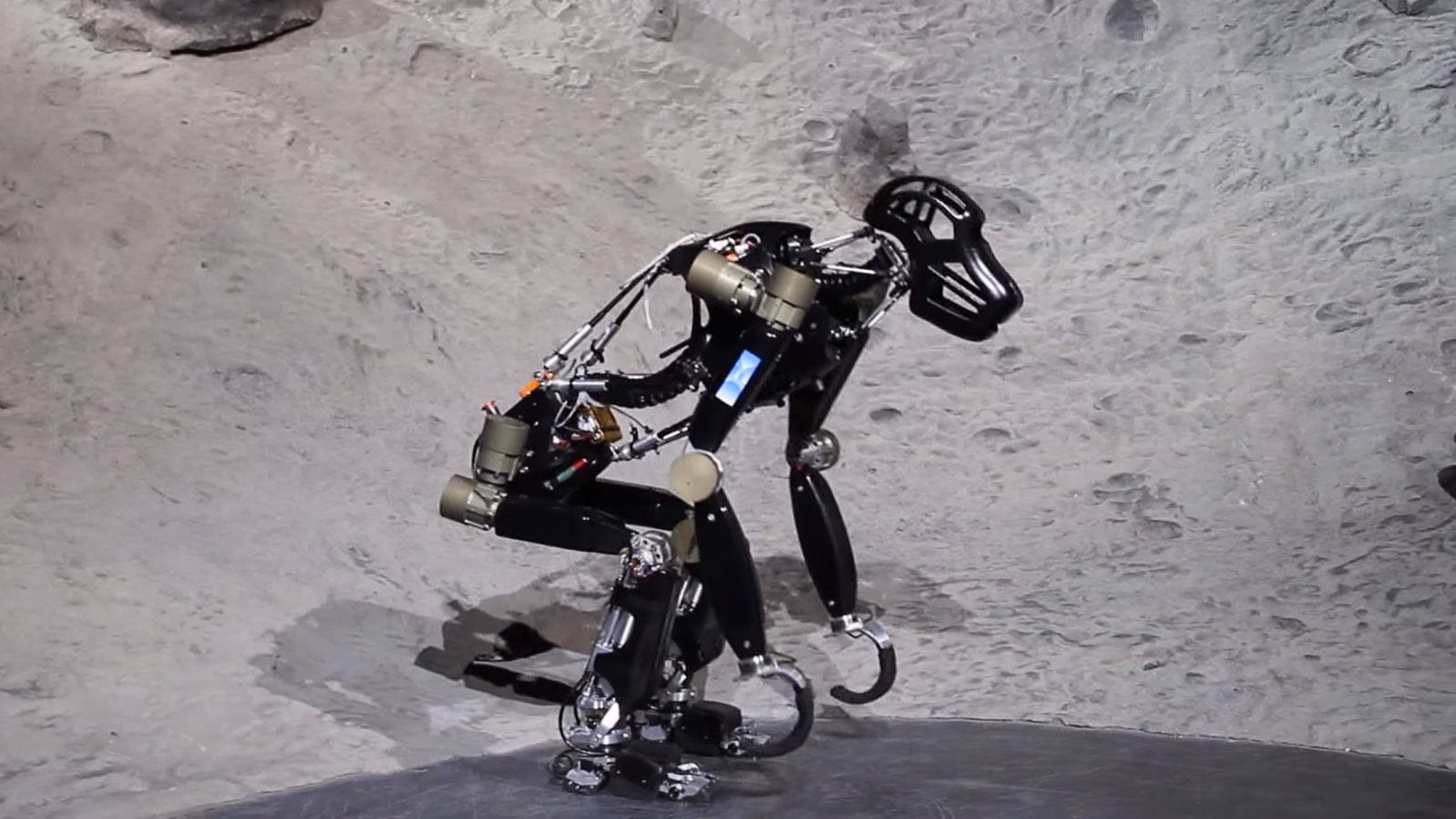Planet of the cyber-apes: Robot chimps might one day explore the moon
German roboticists reckon an ape's stance is the most flexible

In a world of snakebots and BigDogs, robotics engineers seem to have forgotten that the most successful species on planet Earth is descended from apes.
That's why research coming out of the German Research Centre for Artificial Intelligence in Bremen caught our eye. The robotics engineers there believe that the versatile shape and inherent stability of the quadrupedal chimpanzee is the best model for unmanned lunar missions of the future.
They've built a prototype called the iStruct Demonstator ("Charlie", to his friends) which can walk, run, climb, and crawl depending on the terrain that it encounters. "We chose the ape because it allows us to study several locomotion modes," said researcher Daniel Kuhn in an interview with CNN.
"For example, they have quite good quadrupedal walking abilities but they can also perform stand- up motion and walk on two legs -- their ability to do this is greater than other animals. This change in posture and walking form interested us," he said.
Real Feet
The team reconstructed a few Lunar craters in the lab to see how the robot managed them, and discovered that it could walk up and down slopes of up to 20 degrees. While most multi-legged robots have feet that end in a single point, Charlie has multiple points of contact - just like a real chimp - and can carry its own weight and 20 to 25 kilograms extra.
But the researchers say that the biggest advantage is its spine. "We have an actuated spine - one of the first ever built - and for us it was very interesting how the spine influences the motion of the legs," Kuhn said. "We need much less activation for the knee - the knee can be much lower if we use the spine and it needs less force to move the robot."
The next step is for the lab to perfect the transition between two-legged and four-legged gaits, which is proving a challenge. But if that challenge can be conquered, the Moon could one day become a real-life Planet of the (robotic) Apes.
Sign up for breaking news, reviews, opinion, top tech deals, and more.
